General information
Client: commercial.
Location: Manchester.
Area under treatment: over 1000 sq. metres.
Technique: combining mechanical and chemical treatment.
Status: in progress.
Problem: several areas in the park are densely infested with giant hogweed. The sap of the plant contains a photoactive toxic glucoside called furocoumarin and can be found in the leaves, stems and seeds. Contact with the sap on human skin followed by exposure to the UV light of the sun can cause serious burning and can be lethal to children if the exposed area is sufficiently large.
Objective:
control actions on giant hogweed in easy accessible areas need to be put in place to protect the general public from the risk to be injured by the plant.
Survey results
One of the areas infested with giant hogweed was present on the hill at a short distance from the footpath. The plant was flowering during the survey carried out in the end of June.
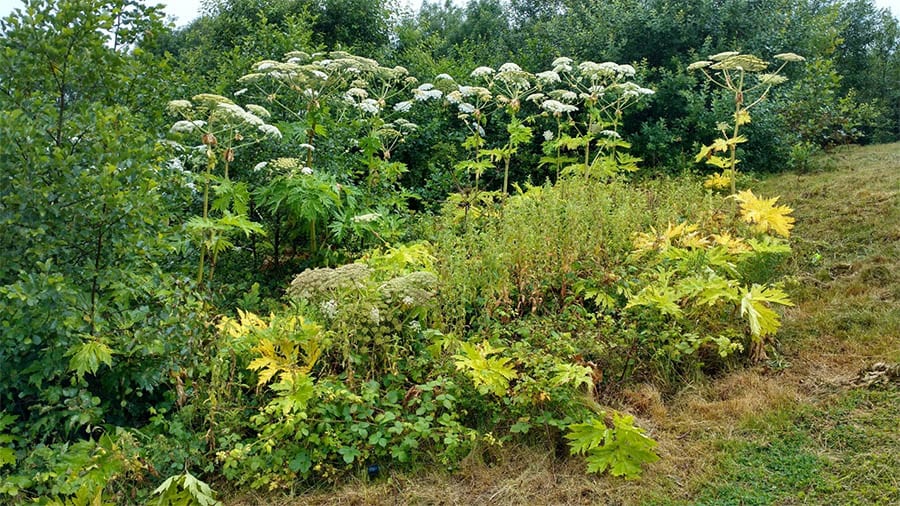
The largest infested area was situated around the swamp in the centre of the park. The area is quite close to the footpath and relatively easy accessible to the public, e.g. children.
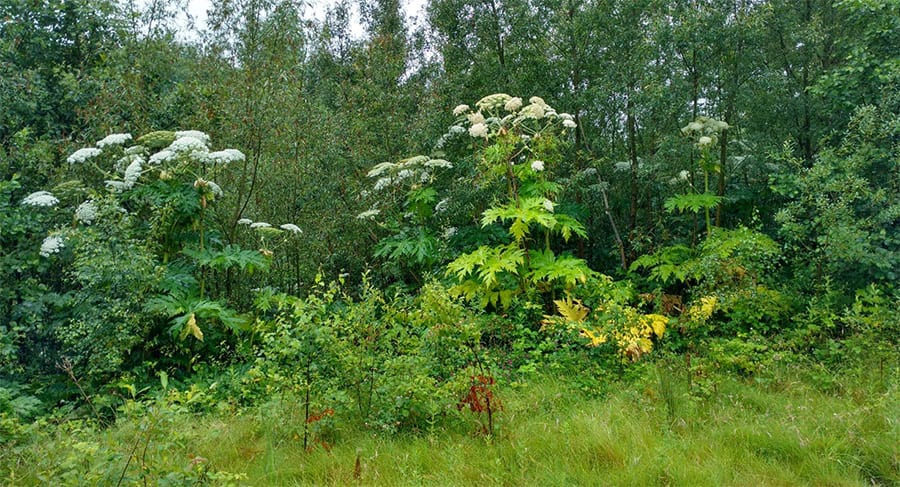
Individual plants of giant hogweed were located in the immediate proximity from the footpath that may put people at high risk.
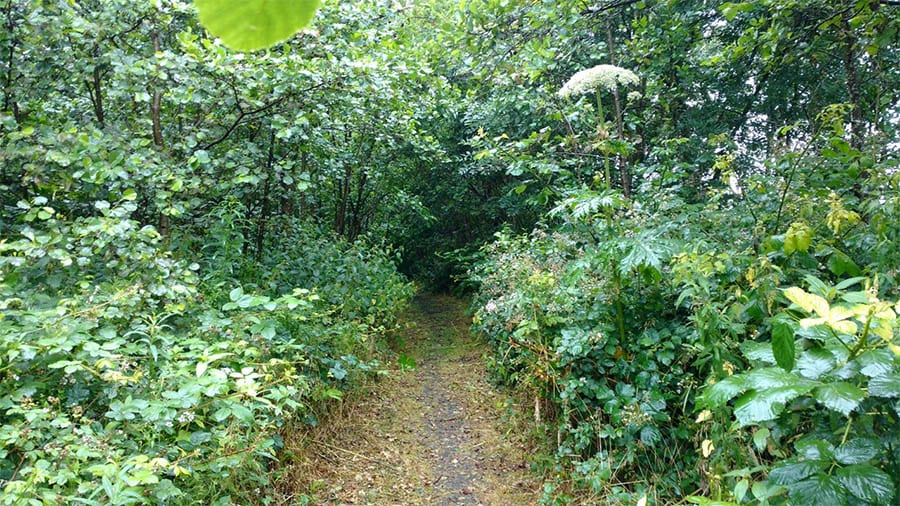
As the plant has started producing seeds we proposed to undertake actions in the next couple of weeks. These included cutting hogweed stems mechanically and disposal of the seeds. The proposed actions will prevent seeds from falling in to the soil and germinating in the next growing season. Each plant may produce up to 12000 seeds and up to 2000 of them may potentially germinate.
Treatment
Giant hogweed in in the end of June to the first half of July reaches 10-15 ft tall and produces flowers. The flowers form a large umbrella-shaped flowers, up to 5 ft in diameter. These are made up of a large number of smaller umbrella-like clusters, each composed of over 50 stalked flower clusters. In most plants, the central umbrellas have already produced seeds. Further, the seeds have also been already formed in the umbrellas around the central one.
In general, our strategy to treat the plant in the first year included the following steps:
- Cutting the plant to the ground level.
- Cutting the umbrellas that have already produced seeds.
- Destroying the seeds.
- (iv) Visiting the site a couple of months after mechanical treatment and applying herbicide where regrowth occurred.
The plants were cut to the ground level by machete. During the operation, our staff were wearing protective equipment to eliminate contact with toxic sap of the plant.
The umbrellas with seeds were cut from each individual plant and carefully collected.

Each umbrella was individually boiled in brine to kill the seeds. Then, the umbrellas with dead seeds were left on-site for composting.

It was roughly estimated that the total number of destroyed seeds was about 2.7 million.
The site was re-visited in the end of August.
Giant hogweed at this time of the year dies back. The seeds produced fall to the ground and spread away from the parent plant, They may produce new plants during several following growing seasons. Large plants were successfully killed mechanically in July. However, due to the mild weather the small plants up to 4 ft tall has regrown sporadically across the infested areas; no plants that has produced seeds since the last treatment were found. Herbicide was sprayed over an new regrowth.
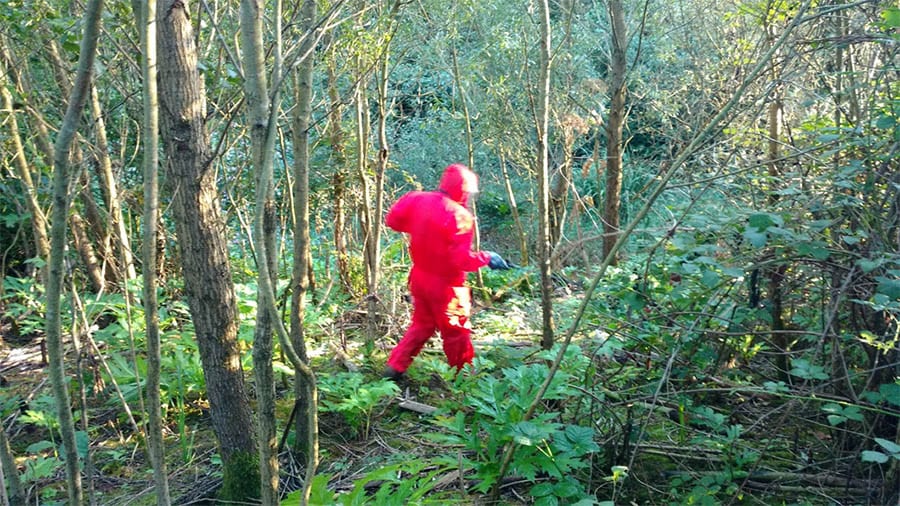
In the second year, the site was visited several times on a regular basis in the period from April to September. The aim of the visits was to treat the giant hogweed before it started to flower. to avoid the plant producing seeds. The plant was mainly treated by spraying a weed-killer when it reached a height of 0.5 meter.
It was concluded in September of the second year that the area is generally clear of the giant hogweed, thus suggesting that the previous treatments had been successful. Below are several photographs showing the areas that were treated cleared of Giant hogweed.
The area around the footpath: no giant hogweed evident.

The area around the pound: no giant hogweed evident.
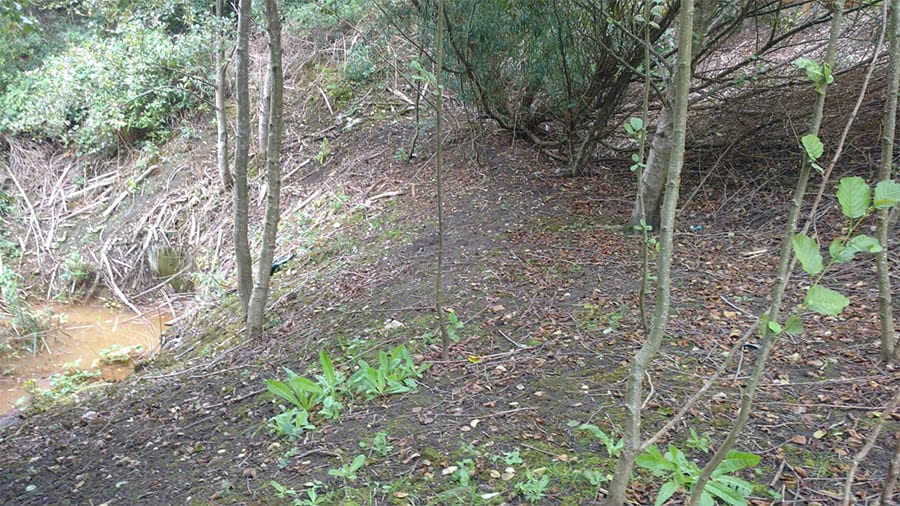
We will visit the site once a month in the period from April to September 2019 to control the hogweed in the area.